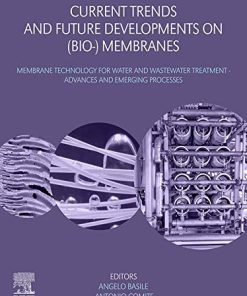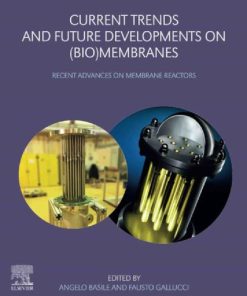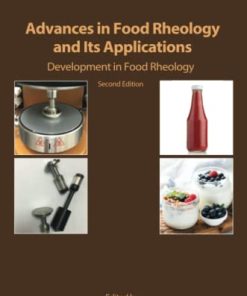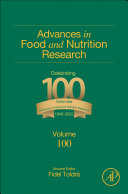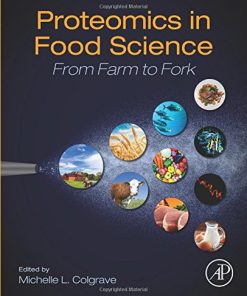(Ebook PDF) Food Proteomics Technological Advances Current Applications and Future Perspectives 1st edition by Maria Lopez Pedrouso, Daniel Franco Ruiz, Jose Lorenzo 032390890X 9780323908900 full chapters
$50.00 Original price was: $50.00.$25.00Current price is: $25.00.
Food Proteomics: Technological Advances, Current Applications and Future Perspectives 1st edition by Maria Lopez Pedrouso, Daniel Franco Ruiz, Jose M. Lorenzo – Ebook PDF Instant Download/DeliveryISBN: 032390890X, 9780323908900
Full dowload Food Proteomics: Technological Advances, Current Applications and Future Perspectives 1st edition after payment.
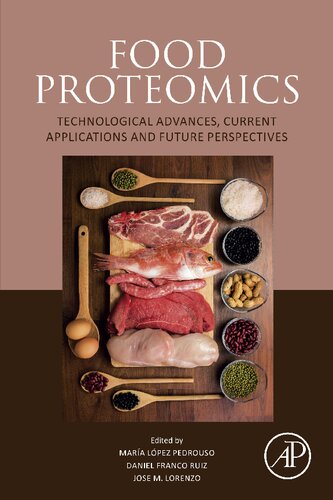
Product details:
ISBN-10 : 032390890X
ISBN-13 : 9780323908900
Author: Maria Lopez Pedrouso, Daniel Franco Ruiz, Jose M. Lorenzo
Food Proteomics: Technological Advances, Current Applications and Future Perspectives addresses many of the food proteomic issues in the industry today. Food proteomics continues to be an emerging field, becoming increasingly important in product innovation, food safety, food quality and health. The book is divided into sections describing the role of proteomics in the field of food science, conceptual background methodological aspects, and bioinformatic tools employed in the field. The book describes proteomic studies collected from the most relevant animal and vegetables species in food production and discusses important food challenges from a proteomic point-of-view.
Food Proteomics: Technological Advances, Current Applications and Future Perspectives 1st Table of contents:
Chapter 1 Introduction Food proteomics: technological advances, current applications and future perpectives
1.1 Importance of the food industry and emerging trends in food science
1.2 An overview of technological applications based on food proteins
1.3 Why proteomics?
References
Section I Technological advances in food proteomics
Chapter 2 Quantitative proteomics by mass spectrometry in food science
2.1 Introduction
2.2 Proteomics
2.3 Proteomic workflows
2.4 Sample preparation
2.5 Gel-based or mass spectrometry based approaches
2.6 Quantitative proteomics in food
2.7 Conclusions and future trends
References
Chapter 3 Technological developments of food peptidomics
3.1 Introduction
3.2 What type of peptides can we found in food matrices?
3.3 Identification of food peptides
3.4 Current workflows in peptide identification
3.5 Quantification strategies in food peptidomics
3.6 Applications and future trends in food peptidomics
Acknowledgements
References
Section II Applications of proteomic in food sciences
Chapter 4 Proteomic advances in crop improvement
4.1 Introduction
4.2 Definition and composition of vegetables
4.3 Cereals proteins. Content and classification
4.4 Scope of vegetable and cereal proteins in agriculture and food
4.5 Concept of proteomics and different approaches to proteome analysis
4.6 Application of proteomics in the improvement of cereal and vegetable crops
4.7 Conclusions
Acknowledgment
References
Chapter 5 Proteomic advances in seafood and aquaculture
5.1 Introduction
5.2 Proteomics of aquatic organisms and their pathogens
5.3 Conclusions
Funding
References
Chapter 6 Proteomics advances in beef production
6.1 Introduction
6.2 Proteomics to investigate cattle breeding, animal performances, and rearing practices
6.3 Proteomics to investigate beef quality and impact of post-slaughter effects: a focus on electrical stimulation and aging
6.4 Brief overview on proteomics of meat quality traits and discovery of biomarkers: a focus on beef tenderness and color
6.5 Conclusions
Acknowledgments
References
Chapter 7 Proteomic advances in poultry science
7.1 Introduction
7.2 Egg proteomics
7.3 Growth performance
7.4 Meat quality attributes
7.5 Meat quality defects
7.6 Infectious disease
7.7 Future directions
7.8 Conclusions
References
Chapter 8 Current trends in proteomic development towards milk and dairy products
8.1 Introduction
8.2 Milk proteins
8.3 Milk proteomics
8.4 Conclusions
References
Section III Applications of proteomic in food challenges
Chapter 9 Proteomic analysis of food allergens
9.1 Introduction
9.2 Immunological mechanism of food allergies
9.3 Food allergens
9.4 Conclusions
References
Chapter 10 Proteomic approaches for authentication of foods of animal origin
10.1 Introduction
10.2 Proteomic approaches
10.3 Authentication of animal origin foods
10.4 Conclusion
References
Chapter 11 Application of proteomics to the identification of foodborne pathogens
11.1 Introduction
11.2 Proteomics strategies: discovery and targeted proteomics
11.3 Discovery proteomics for the identification of foodborne pathogens
11.4 Targeted proteomics for the identification of foodborne pathogens
11.5 Concluding remarks and future directions
Author contributions
Funding
Conflicts of interest
References
Chapter 12 Peptidomic approach for analysis of bioactive peptides
12.1 Peptidomic: definition
12.2 Sample preparation and protein isolation
12.3 Peptide purification
12.4 Peptide detection and data analysis
12.5 In silico analysis of bioactive peptides
12.6 Key findings
People also search for Food Proteomics: Technological Advances, Current Applications and Future Perspectives 1st:
food production technologies
food technology advancements
technological advancements in food industry
technological advances affecting food preparation
a food processor
You may also like…
Engineering - Bioengineering
Technique - Food Manufacturing
Science (General)
Advances in Food and Nutrition Research 1st edition by Fidel Toldra 0443193057 9780443193057
Chemistry - Chemistry - General & Miscellaneous
Religion & Spirituality - Religious Studies
Violence and Peace in Sacred Texts: Interreligious Perspectives Maria Power
Technique - Energy: Renewable Energy
Biology and other natural sciences




